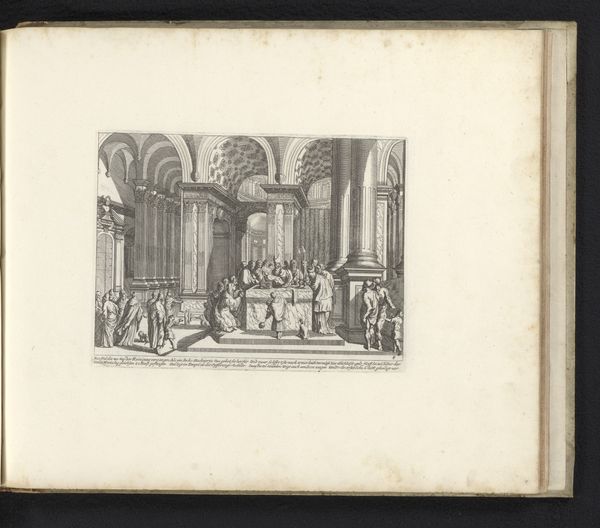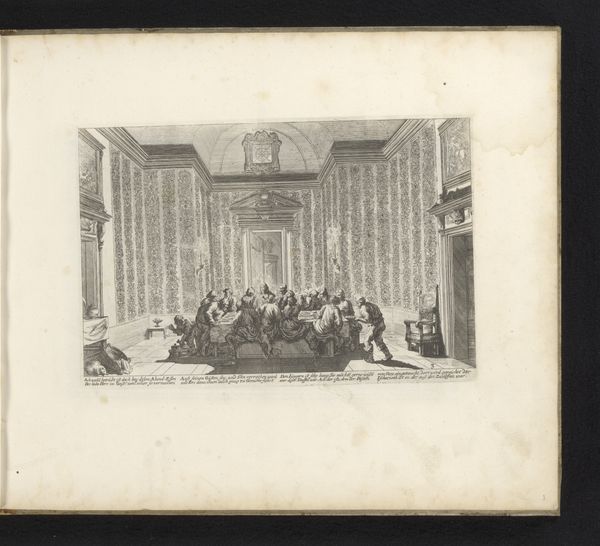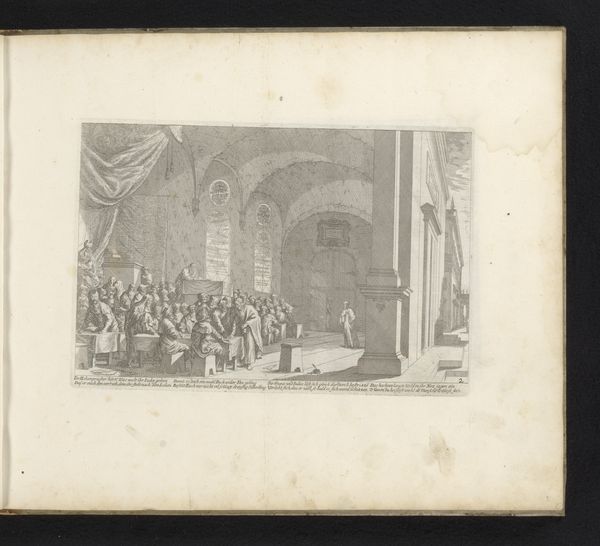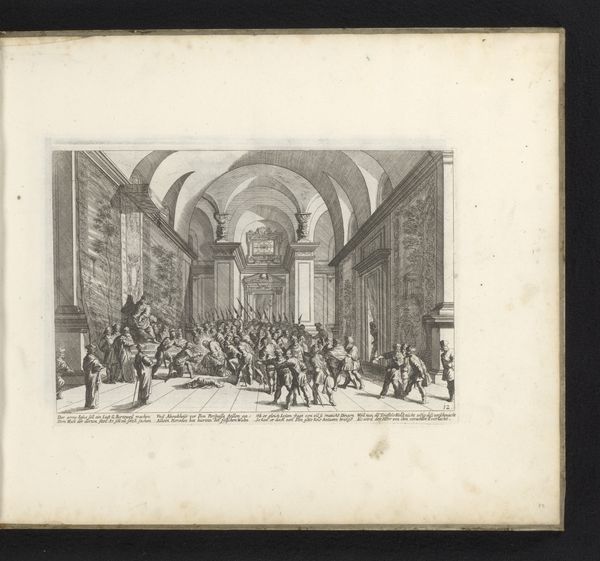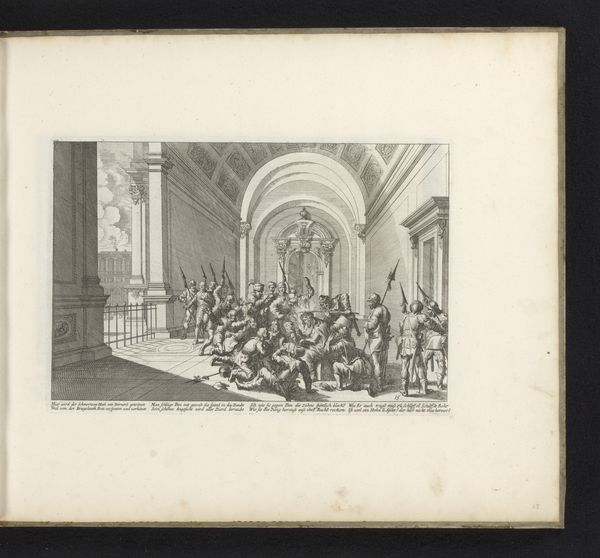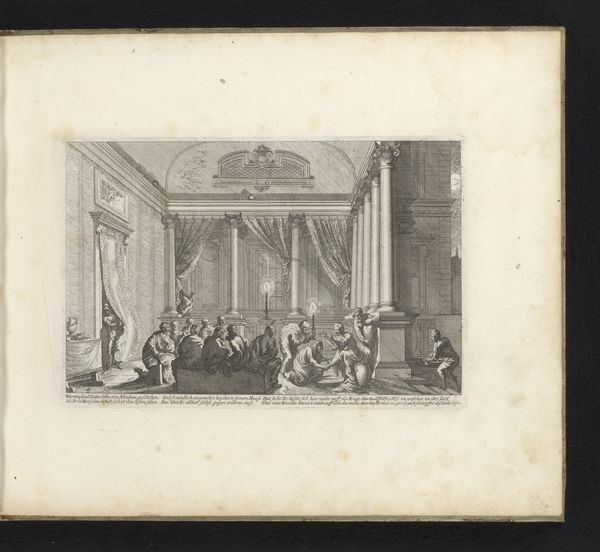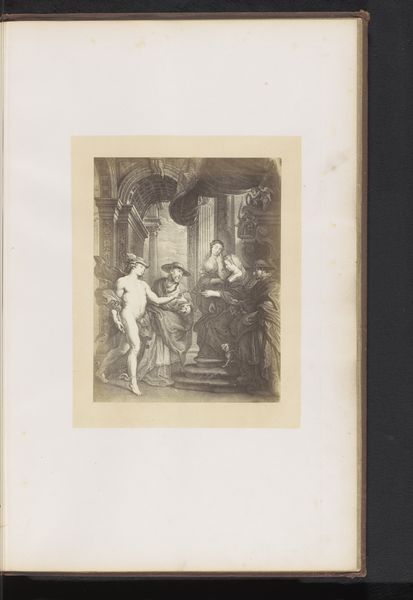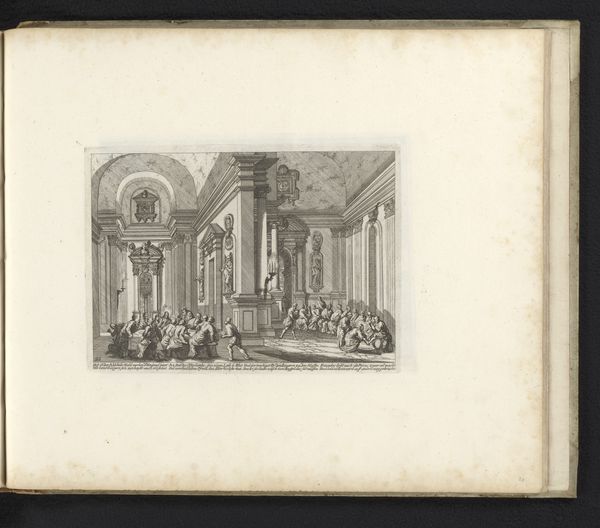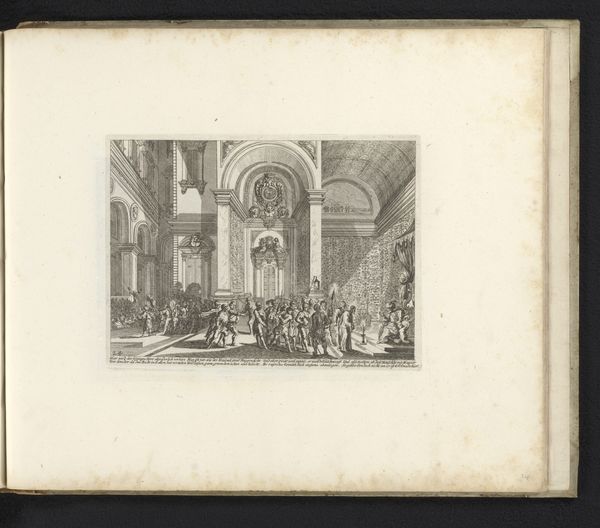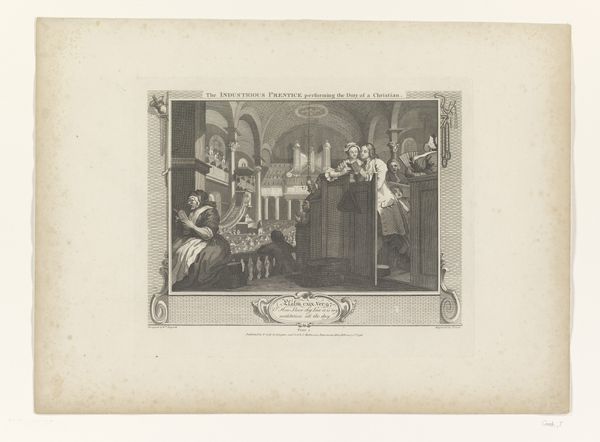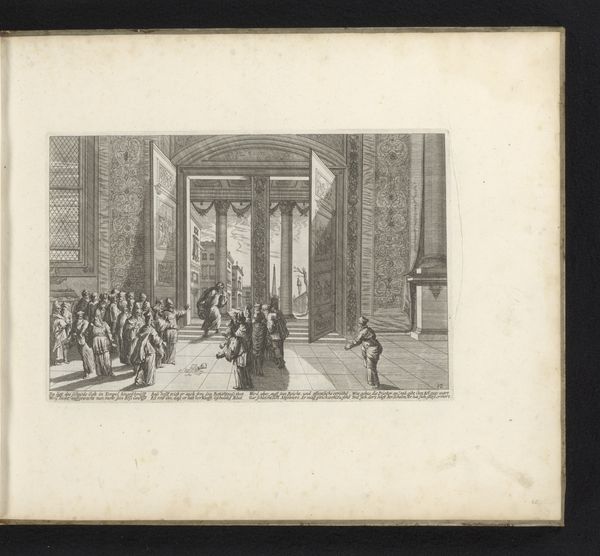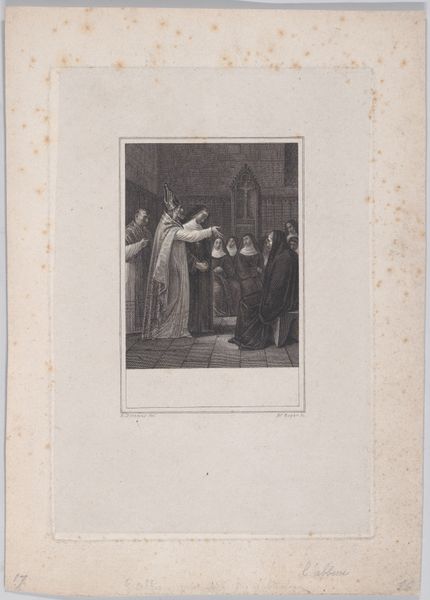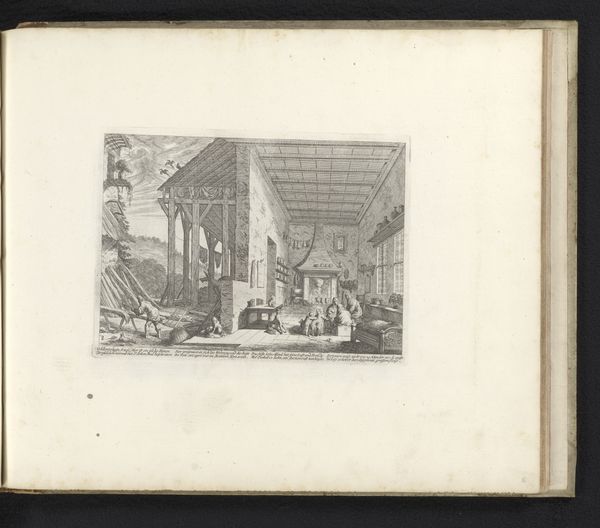
print, engraving
#
baroque
# print
#
figuration
#
history-painting
#
engraving
Dimensions: height 151 mm, width 202 mm
Copyright: Rijks Museum: Open Domain
Melchior Küsel's engraving captures the biblical event of Pentecost, the descent of the Holy Spirit. Above the apostles hovers a radiant eye, a symbol laden with meaning across cultures and epochs. The "Eye of God," or "All-Seeing Eye," has roots stretching back to ancient Egypt with the Eye of Horus, a symbol of protection, royal power, and divine vision. This motif resurfaces throughout history, notably during the Renaissance. Here, in Küsel’s work, it becomes a symbol of divine omniscience. Consider how this emblem has been adopted by various groups, sometimes shifting its associations, yet persistently evoking surveillance and insight. It taps into a deep-seated human fascination with the seen and unseen, the known and unknown, engaging viewers on a profound level. It embodies the power of collective memory. This symbol, once pagan, transformed by Christianity, and later secularized, showcases the cyclical journey of images. This illustrates how symbols are continually reinterpreted, imbued with new meanings, and repurposed across time.
Comments
No comments
Be the first to comment and join the conversation on the ultimate creative platform.

